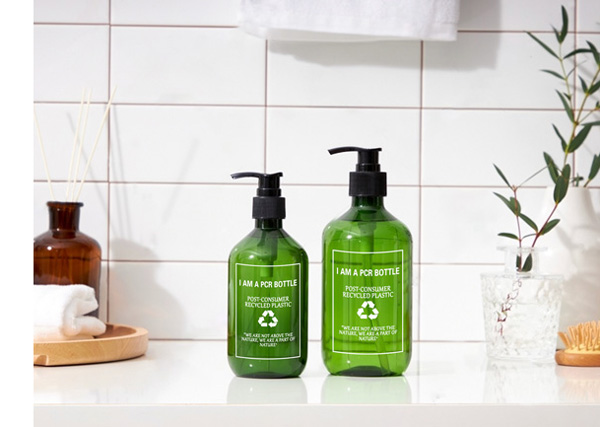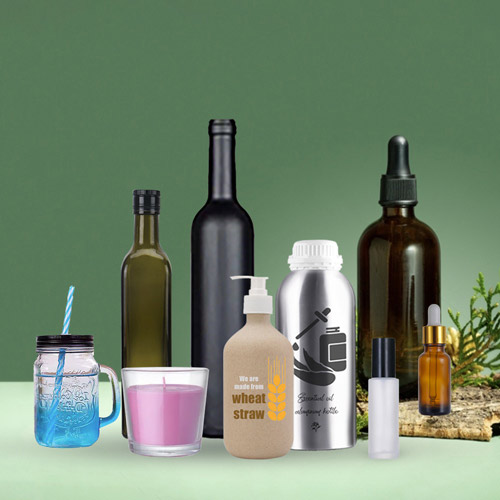
High-quality packaging has always been a crucial topic in the cosmetics industry. With the development of the economy, ecological friendliness has become more important than ever. Consumers are increasingly aware of the adverse environmental impact of human activities and are actively seeking ways to reduce this impact. The cosmetics industry has taken note of this trend and is moving towards sustainable development. The European Union mandates that by 2025, plastic products must contain at least 25% post-consumer recycled materials to be sold, and similar regulations are being introduced in other regions. With the introduction of eco-friendly packaging products like PCR plastic bottles, the landscape of environmentally friendly cosmetic packaging is evolving. PCR recycled plastic is gaining favor among many cosmetics companies due to its versatility. Stringent regulations have been established by international organizations to control the sourcing and usage of PCR materials, and only PCR plastics from suppliers certified by the Global Recycled Standard (GRS) meet international standards.
1. What is PCR Plastic?
In the broad realm of eco-friendly plastics, PCR(Post-Consumer Recycled) stands out as a highly competitive choice. PCR refers to the recycling of used plastics like PET, PE, PP, HDPE, and others. Waste plastics are collected from recycling streams and processed through mechanical recycling systems, involving sorting, cleaning, and pelletizing to produce new plastic pellets. These pellets are then processed into food-safe, FDA-approved plastic bottles. The resulting plastics are known as rPET (recycled polyethylene terephthalate), rPP (recycled polypropylene), and rHDPE (recycled high-density polyethylene). PCR plastics can be added to the original plastic in varying percentages or used entirely in the manufacturing of new plastic products. Many manufacturers are adopting PCR to support recycling initiatives, meet consumer demands, and reduce the impact on landfills. Studies show that PCR plastics can be safely recycled approximately seven to nine times.
2. Why Use PCR?
PCR plastic is a crucial step in reducing plastic pollution and achieving carbon neutrality. While plastic products have brought tremendous convenience to human life since their invention, the issue of plastic waste has become a growing concern. Mixing enzymatic chain reaction plastics with virgin plastics for manufacturing helps reduce the amount of plastic waste in landfills, oceans, and other natural environments. This method not only decreases carbon dioxide emissions but also reduces energy consumption, contributing to environmental protection and aligning with global efforts to address climate change.
3. Pros and Cons of PCR Plastic
Pros: Post-consumer recycled (PCR) plastics are manufactured from existing plastics, requiring less energy and fossil fuels compared to producing virgin plastics. The new PCR plastic pellets have the same structure as the pre-recycled plastics, making them cost-effective and environmentally friendly. Another advantage of PCR plastics is their recyclability, reducing both carbon dioxide emissions and energy consumption. Studies indicate that recycled plastics result in a reduction of greenhouse gas/carbon emissions by over 25% compared to original resins. The benefits of PCR packaging are numerous, including sustainability, resource conservation, compliance with regulatory agencies, cost efficiency, and positive brand image. Today, environmentally conscious consumers actively seek products with minimal virgin plastic content, making PCR cosmetics packaging an attractive choice that aligns with Earth-friendly values.
Cons: Despite the usefulness of PCR as a recycled material, it can only be manufactured in the presence of partially recycled plastics. True PCR materials require a series of product screening, sorting, and purification processes to ensure compliance, as failure to do so may pose risks such as excessive levels of harmful substances. Not all recycled products can be used for remanufacturing, making PCR more costly than direct aggregation products. Additionally, recycled plastics may not exhibit the same physical appearance purity as original plastics, leading to common issues like black specks, gray/yellow discoloration, and gelling in PCR plastic bottles. Furthermore, its physical properties may change post-manufacturing, resulting in potential defects that affect aesthetics and functionality. Due to the inherent impurities in PCR (visual defects), clients using PCR are strongly advised to opt for dark (amber, forest green, cobalt blue, etc.) or opaque colors rather than light-transparent colors. Also, components made from PCR may experience poor adhesion results when subjected to metallization, color coating, or ink printing. Lastly, due to the nature of PCR plastic being recycled, compatibility testing is required before filling any liquids into PCR bottles to mitigate contamination risks or lack of consistency. Therefore, PCR is not suitable for applications in the pharmaceutical or medical industries.
4. Applicability of PCR Plastic in Cosmetics Packaging
PCR recycled plastics are suitable for cosmetic packaging products. When using PCR plastic bottles, we continuously test their material compatibility. Rigorous experimental testing has proven them to be safe for cosmetics packaging. Although they may not possess the same luster as new materials, they contribute to a more environmentally friendly solution.
5. Case Studies of PCR Plastic in Cosmetic Packaging
Through Recyc's research, we have successfully designed and produced various PCR plastic bottles suitable for daily care and skincare products, including shampoos, shower gels, foaming cleansers, creams, lotions, toners, and serums. These plastic bottles are made from 50% PCR plastic and 50% new plastic, and we can even manufacture them using 100% PCR plastic. Our PCR plastic bottles are not limited to cosmetics packaging but can also be used for food and beverage packaging, such as water, juice, condiments, and more.
Conclusion:
With the economic development of society, PCR plastics will play an increasingly important role in various industries, with a growing focus on the use and development of eco-friendly plastics. If you are considering incorporating PCR elements into your cosmetics packaging, feel free to contact the Recyc team for a comprehensive and professional PCR plastic packaging solution.





